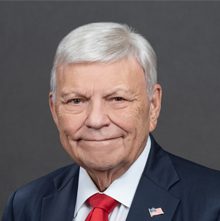Supply Chain Disruption, Construction Cost Increases Continue
For any project in the pipeline, the focus must be on securing supply.

By the time this article is published and The Wholesaler magazine is delivered, we will be midway through the fourth quarter of 2021. The PVF industry continues to face many uncertainties, as mentioned in last month’s column.
Continued dysfunctions in the supply chain, price escalation, shipping delays, shortage of skilled/unskilled labor, shortages of critical construction materials, pending legislation and regulation way heavily on the ability of our industry to recover from the COVID-19 recession. The Biden administration’s war on energy is impeding the industry’s ability to provide cost-effective energy to fuel the economy.
As of this writing, the labor force participation rate fell to 51 percent, with only 194,000 jobs created, down significantly from an expected 500,000 growth.
Stuart Varney, a business commentator at Fox News, stated that inflation is here and will remain with us much longer than the administration is forecasting. Should this winter season be colder and more severe than expected, the cost of natural gas could rise rapidly from its current high of $5.909 MMBTU (as of this writing).
IHS Markit indices are proprietary measures of cost and draw upon proprietary tools to provide a benchmark for comparing construction costs. Construction costs are tracked on a quarterly basis and report as an index value to show how upstream and downstream costs have changed. Therefore, an index of 170.3 represents construction cost increases of 70.3 percent since 2000.
Capital costs for downstream construction projects increased 5 percent during the second quarter of 2021, the largest quarterly increase since 2000.
Project costs increased due to higher raw material prices, increased demand and supply constraints resulted in rising costs of steel, equipment and construction materials. Equipment and steel costs account for more than 50 percent of total project spend.
Even at the smallest level in the PVF industry, there is a shortage of fittings and flanges, which creates a bottleneck for major equipment vendors. Suppliers are unable to fill orders, resulting in project delays. Suppliers opt not to sign contracts as they know they are unable to provide the products on a timely basis.
For any project in the pipeline, the focus must be on securing supply. Change orders need to be prevented at all costs as switching quantities of items or specifications have a negative impact on productivity and project cost.
The overall index is expected to continue increasing through 2025 at a rate that will likely exceed Brent pricing.
House NRC and the budget bill
The House leadership divided up the $3.5 trillion budget reconciliation bill into multibillion-dollar segments to specialized authorization committees.
The House Natural Resources Committee was tasked with a markup of $25.6 billion in spending recommendations and revenue-raising proposals to protect the environment, promote renewable energy, and target upstream oil, gas and mining operations for higher costs and greater restrictions.
It approved a bill that would raise revenue from upstream oil and gas operations on federal lands at the energy stage, with new fees and increases in existing fees, royalties and penalties.
The following are a few of the committee recommendations:
Raise the minimum royalty rate for oil and gas production to 20 percent from the current 12.5 percent.
Assess royalties on almost all methane extraction, including on gas used on-site and on gas vented, flared or leaked, with exceptions only for 48 hours of acute emergencies or for tribal operations on tribal land.
Eliminate incentives for natural gas productions currently available under the Energy Policy Act of 2005.
Eliminate the Arctic Natural Wildlife Refuge oil and gas program and cancel all existing leases.
Establish new fees, including a conservation of resources fee, a speculative leasing fee, an expression of interest fee, an idled well fee and for pipeline owners, an offshore pipeline per-mile fee.
Increase civil and criminal penalties for violations, in most cases doubling or tripling the penalties.
Establish federal onshore and offshore severance fees for oil and gas production at a rate of $0.50/barrel of oil equivalent.
Raise minimum bid requirements, rental rates, bonding requirements and inspection fees.
Oil and gas trade associations have warned repeatedly that higher costs and greater restrictions will drive production to private lands and overseas. That could reduce federal revenues without reducing total oil and gas consumption or greenhouse gas emissions.
We should be focused on growing American leadership, not returning to the days of relying on OPEC+ to meet our needs, notes Frank Macchiarola, the American Petroleum Institute’s senior vice president of policy, economics and regulatory affairs.
U.S. National Security Advisor Jake Sullivan made a statement calling on OPEC+ to do more to support global recovery.
In response to Sullivan’s statement, Todd Staples, president of the Texas Oil & Gas Association, said, “Our nation is the leading producer of oil and natural gas, providing affordable and reliable energy. Our companies employ millions of Americans and are primary founders in many states of roads, schools, universities and economic stabilization funds, yet the Biden administration has canceled energy infrastructure projects and suspended federal oil and gas leasing permits.
“And now the administration wants to count on OPEC+ to increase production to bring stability to the energy markets. Why promote jobs in other countries and not American jobs? Why rely on other countries while hamstringing our own energy sector? The best way to ensure Americans and our trade partners have access to clean, affordable and reliable energy is to encourage homegrown, domestic energy that supports jobs and economic growth while continuing our commitment to environmental progress.”
Also commenting on the Sullivan statement, the Independent Petroleum Association of America said that prolific U.S. shale development helped keep oil prices low — the United States quite literally drilled its way to lower gasoline prices. “The Biden administration is limiting domestic production while asking other countries to pump more crude,” the organization notes. With the issues set forth in this column, it is highly recommended that you maintain close contact with your manufacturer/supplier to avoid stock outages and unexpected delays in shipping, as well as anticipated price increases in the ensuing months. As of this writing, one major domestic forged carbon-steel flange manufacturer has already increased its pricing structure.
PVF Roundtable News
The next 2021 “Fill the Pantry” networking meeting will be held Dec. 7 at Houston’s The Bell Tower on 34th.
The golf tournament and Trout Blast are the two major fund-raising events held by the PVF Roundtable Charitable Foundation. Funds raised are dedicated to the PVF Roundtable scholarship programs.
The 2021 PVF Trout Blast was held in Matagorda, Texas, in early October. It was a record-breaking event, thanks to all the volunteers and committee member efforts.
As a member of the board of directors, and I speak for all members, we thank you for your participation in these events.
The networking meetings are a unique venue for you and your associates to network with your peers in the PVF industry. These events provide the platform to share information, discuss pertinent issues, meet new contacts, develop new and long-lasting friendships and pursue new opportunities in the industry.





